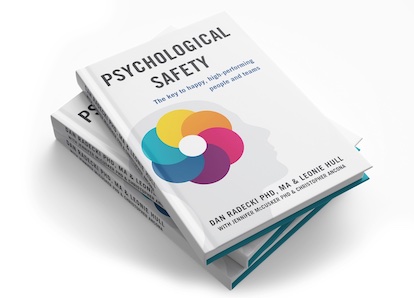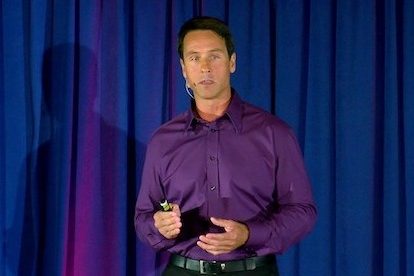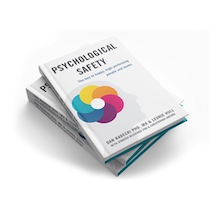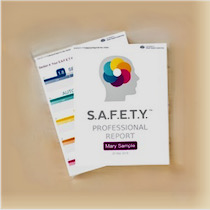The neuroscience and social psychology that underlies why people do what they do is both well-known and fascinating. We have been writing about the S.A.F.E.T.Y.™ Model, but the question comes up, “How can you spot someone with particular S.A.F.E.T.Y.™ triggers without first making them take an assessment?”
Well, of course, to get into the nitty-gritty details, the assessment is required; however, in general, there are basic things you can look for to get a sense of some of their triggers. Over the next several weeks, we will be writing about some ways to spot the extremes of each S.A.F.E.T.Y.™ domain.
It is important to note that all domains work together, so these blog posts will not consider the interdependency between domains. For example, this blog is about Security – so it will not consider the ways things would change between a person who had a high need for Security and a low need for Autonomy or a person with a low need for Security, a high need for Trust, and a high need for Esteem. We will be giving examples and explaining the domain as if it were to stand in isolation – which of course it does not. At the same time, this approach will allow one to get a sense of how the sensitivity for a domain can impact behaviors. So here goes with part one in a series of five blog posts about S.A.F.E.T.Y.™ domains.
Security in Management
Security is the need for consistency, certainty, and no change. So, if you want to spot these people, then you just look for that person who always needs details. Look for the person who seems to find every possible problem with any change initiative. Find the person who wants a lot of clarity and explanation.
The manager who has a high need for Security is likely to be a micromanager because the manager has a need for certainty and they want to personally be present to fight off change to plans or outcomes. This is also the manager who appreciates someone keeping their promises over someone who is very creative or innovative, but misses deadlines. For example, this manager will unknowingly express their high need for Security in a performance review with the innovative person by disproportionately focusing on missed deadlines and failing to acknowledge the team member’s creative problem-solving capabilities or their ability to innovate improvements and design new products.
The worst managers with a high need for Security will even slow walk or kill creative ideas for any number of reasons including, “If it ain’t broken, don’t fix it.” You’ll hear them say, “We already have too much on our plates to make any changes right now.” They might say, “I am not going to risk messing up things for an unnecessary change.” They will argue, “That’s not your job, you need to stay in your lane”.
Now, there are many valid reasons to make those statements, but if those statements are the standard operating answers of that manager, then it’s likely they are expressing their high need for Security and potentially risk stunting the potential of the team.
People high in the need for Security tend to be detail hounds, they tend to need a lot of clarification, and they need either to be given certainty or create certainty for themselves. Moreover, when they don’t have that clarity and certainty, they are obviously stressed and uncomfortable. Conversely though, managers with a high need for Security along with the proper skill sets can be great quality managers and project managers. They are also the people you want to oversee risk management in high risk areas.
The project manager who enjoys his or her job is also likely high in the need for Security, because good project management needs to track details, extract promises from people and then keep track of those promises and aggressively follow up when they are broken. They can also make good investigators and police officers – again if they have the right skill sets. At the same time though, they are not the managers you want in innovative product development companies that are flush with cash.
The manager with a low need for Security will look a lot different. That manager will likely focus on innovation and ideation over the simple keeping of promises – which they may find “short sighted” and “inconsequential”. This manager is also likely to go to bat for and defend their innovative team to upper management if deadlines are missed, claiming that the improvements that have been made will yield very strong benefits into the future. They are happy to argue, “Things change.” They’ll explain eagerly, “We need to be adaptable”. This manager will also put more of a focus on innovation in performance reviews. Unfortunately, if these managers find the wrong area of work, like production in a factory where deadlines are critical, then they are likely to either be demoted or moved to another job quite quickly.
Security in Individual Contributor Employees
Now, how about lower-level employees? Can you imagine how an employee who is low in need for Security will act differently than someone with a high need? Maybe the person with a high need for Security will need and even prefer to be micromanaged. Maybe the person with a high need for Security will not be the one to innovate. Maybe the person with high need for Security will be the one to find every potential problem with a change, become frustrated with change and be the hardest to “sell into” a change initiative – even if offered with the promise of future benefits. This person may be the least adaptable and most strong headed.
But on the other hand, this person will keep their promises. This person is likely to be on-time and on-task. This is the person who, despite the complaining and resistance to change, is often a highly valued contributor, because of their likely dependability. Besides the neuroscience research, first-hand experience working in factories demonstrated that the people who do everything the boss asks, who make promises and fight to deliver on them, and who are the most dependable in the factory tend to be the same ones who hate change. They just want things to be stable and the way they have always been. These are also the people most upset or hurt when the company cuts back due to a lack of adapting to the market conditions. They never saw the change coming. Case in point, was one factory that went exactly this way, along with all of its employees. So, for sure, the high need for security is a double-edged sword.
Team Selection for a Stronger Business
What do you think? Would you want employees with a high or a low need for security and why?
Now, of course when it comes to selecting a teammate, you cannot look at the individuals’ Security score alone. Plus, when it comes to team performance, what is most critical is the landscape of scores and the subsequent dynamic inside that team. You’ll want to have a diversity of scores to allow for the differing opinions you need to make the most informed and best decisions possible. You don’t want to get stuck in a one-sided bubble of ideas that shields your team from the realities of the situations you face.
If you want to know more about what the Academy of Brain-based Leadership does to help teams perform at their best, you can find out more at brainleadership.com.













